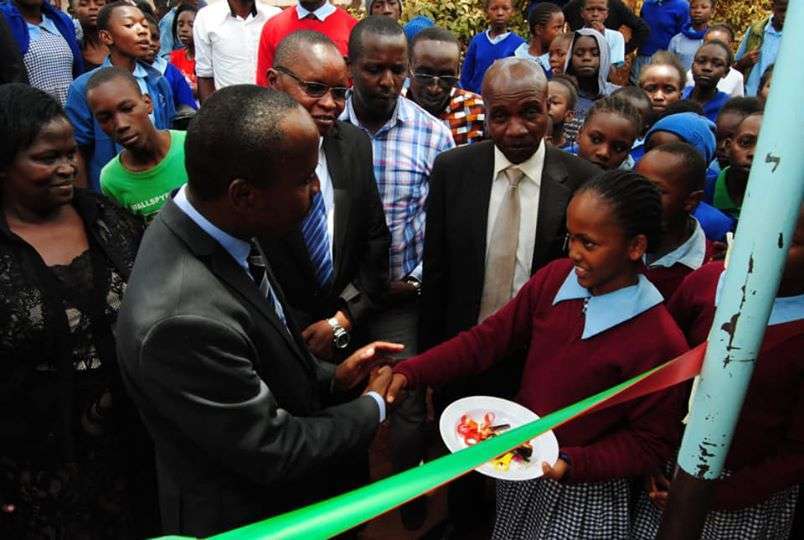The medical scheme known as Edu Afya covers all students from Form One to Form Four who are in public institutions.
TABLE OF CONTENTS
Edu Afya offers both Out-patient and In-patient medical covers.
Eligibility
- You must be a student in public secondary school.
- Be registered by NHIF through NEMIS database -The National Education Management Information System (NEMIS) is web-based data management that keeps data of learners.
Once a student registers at the NEMIS database, the data is automatically shared with NHIF. An appointment is booked for the student to avail his/her biometrics.
Related News:
NHIF Cover For Secondary School Students, Edu
THE COMPREHENSIVE MEDICAL INSURANCE COVER: Edu Afya
Edu Afya NHIF Medical Scheme for Secondary Students; Complete Guide
Edu Afya Information Pack: Medical Cover for Students
Edu Afya NHIF Medical Scheme for Students: Requirements, How to Register, Benefits
Edu Afya NHIF Medical Scheme for Students: Requirements, How to Register, Benefits
Benefits of the Edu Afya Scheme
Outpatient benefits
Under Edu Afya, outpatient services are provided by a clinician/physician who is a licensed medical practitioner.
A student can be referred for a specialized outpatient service if need arises.
Specialized outpatient referrals include; renal and dialysis services, radiology, chronic ailments and cancer treatment.
Dental cover
Under dental cover a student will enjoy the following health benefits;
- Tooth extraction
- Root canal
- Dental X-ray services
Optical cover
All expenses related to eye treatment are covered in Edu- Afya. They include; consultation, eyes testing, prescription and any optical related accident.
Life cover
In the event of demise of a patient, immediate family (next of kin) will receive a sum total of Ksh500,000
Inpatient Cover
Inpatient services are done on a referral basis from the selected outpatient Health Care Provider.
All hospital accommodation charges are catered for as well as pre-hospitalization diagnostic services.
All fees rising from doctor and nursing chargers are also catered for as well as drugs prescribed.
In case there is need for rehabilitation, operation or radiological diagnostic, NHIF through Edu Afya will cater for everything.
Emergency rescue services are also accorded to all students under Edu Afya medical cover. This includes both air and road rescue services.
Overseas treatment
In an instance where a student needs specialized treatment overseas, NHIF will cover all costs arising including travel logistics.
HOW THE SCHEME WORKS
Registration of beneficiaries
The EduAfya scheme offers comprehensive medical insurance coverage for students in public secondary schools registered with the National Educational Management Information Systems (NEMIS)
Also see: Nemis Portal Login, Portal
Reasons why all learners are not captured on Nemis.
- network issues,
- the lack of internet technology (IT) and/or IT “savvy” to register students on NEMIS;
- lack of birth certificates for some students;
- keying errors resulting in invalid NEMIS numbers;
- transmission lag of NEMIS numbers due to student transfers; and,
- ultimately, low motivation on the part of school heads to lead registration of students to NEMIS.
Contracted facilities
Health facilities with existing NHIF contracts are eligible to provide services to students. No separate contract is issued for EduAfya.
NHIF guidance indicates that outpatient services are provided on a choice-basis at any contracted facilities.
Students access ward bed facilities for inpatient services in any accredited facilities. This
includes accredited mission/faith-based healthcare providers and accredited private hospitals, except for high-cost private facilities. Inpatient care is on a referral basis from the selected outpatient care facility.
Payment to facilities
EduAfya services are reimbursed on a fixed-fee-forservice basis. This ranges from KES1,000 to KES1,500 for out-patient and KES 1,500 to KES 4,000 daily rebate for in-patient services depending on the size of health facility and the NHIF contract.
Through discussions with providers, there was a sense that EduAfya rates were generally fair and better than what is provided for under other NHIF schemes, such as the national scheme’s capitation rate.



